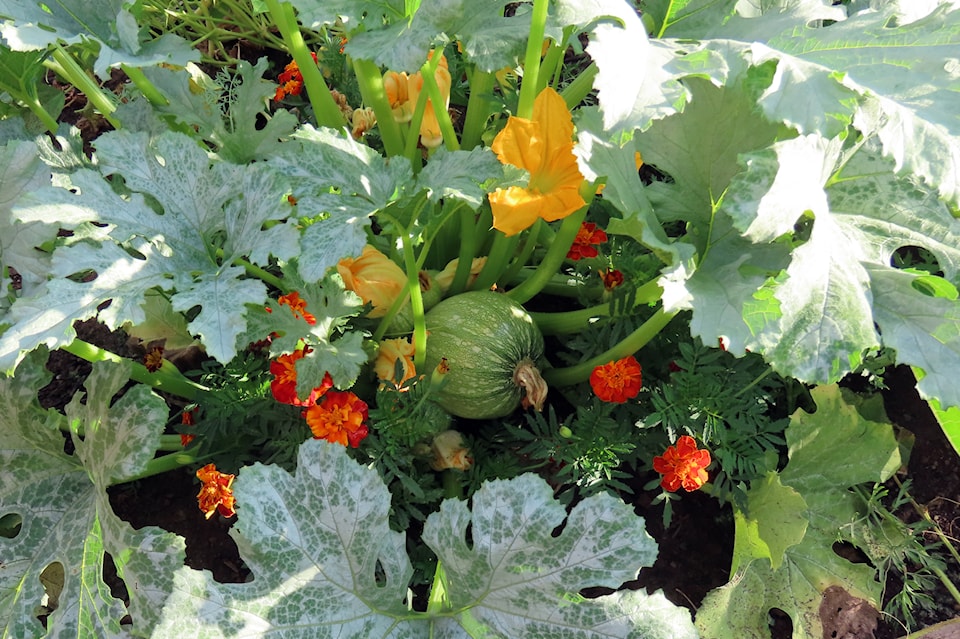Not seeing any fruits on your cucumber and squash plants? You are not alone.
Other gardeners are having the same problem, including us.
It is alarming to see a healthy plant with lots of flowers but no tiny fruits developing. Especially since summer is progressing and we want to realize at least some harvest-sized crops.
The problem with no cucumbers or squash right now is that all of the flowers on the plants are likely male.
There are four different flower types in the Cucurbitaea family. These include: monoecious (male and female flowers on the same plant); andromonoecious (separate male and perfect flowers on same plant); gynoecious (mostly female flowers with 5 to 10 percent being male); and hermaphroditic (perfect flowers).
Note: Perfect flowers have stamens and carpels, the male and female sex parts, in one flower.
Here, we are just going to focus on the monoecious cucurbit species – cucumbers, squash and muskmelons – which have both male and female flowers appearing on the same plant. (Most cucurbits are, in fact, monoecious.)
The first flowers to start appearing on monecious cucurbit species will all be male flowers. Usually, there will be eight to 10 male flowers on the plant before even one female flower appears on the plant.
But depending on the squash, cucumber, or muskmelon species, the actual ratio of male to female flowers can be as high as 25 to 30 male flowers to one female flower. Or it could be as few as eight males to one female - perhaps even lower.
In the interests of harvesting a decent-sized crop, these can be very long odds for the grower. And that is in a good year.
Factor in a few other details - temperature, day length, light levels, hormones…and growing zucchinis, cucumbers, winter squash, and muskmelons is enough to try anyone’s patience.
Temperature is your first clue if you are seeing only male flowers on your cucumbers or squash plants. High temperatures promote male flower production. If any female flowers should appear, the high day and night temperatures tend to induce the plant to abort them. This can be a definite problem if you are growing at least some of your cucumbers in a greenhouse as we are; hardly have any female flowers on those plants.
Alternately, cool temperatures will induce monoecious cucurbits to produce only female flowers. So, in cooler climates or a much cooler than normal season, the tiny fruits shrivel up and drop off because no male flowers have been produced to pollinate the females.
So, in answer to why we are not seeing very many fruits on our cucumber and squash plants, it is the weather’s fault. Temperatures were too high at a critical period for female flower development, but perfect for male flowers.
I did mention other factors impact on flower sex development in cucurbit species: light levels, day length, and hormones. While none of these have been a primary factor, in most cases, for this year’s crops, I delve into them a little for future reference.
High light levels promote the development of female flowers. Alternatively, too much shade can reduce female numbers, as well as impact adversely on male flower numbers.
Day length, or photoperiod, usually does not impact too strongly on flower sex development, especially for field production. In the greenhouse, shorter days can stimulate more female flowers in some cucumber species.
As for hormonal influences, think teenagers. They have an impact.
You can find more information about these cucurbit issues, including flower sex identification, on my website:
Leslie Cox co-owns Growing Concern Cottage Garden in Black Creek.



